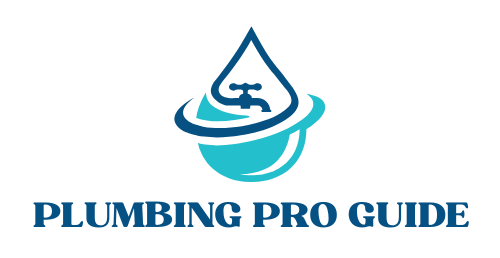A washing machine faucet leak can create more than just a wet patch in your laundry area. When water seeps behind the appliance, it can damage walls, flooring, and cabinetry, and in some cases even cause mold growth. If left unattended, the constant moisture can also lead to rust around fittings and compromise the performance of your washing machine. Knowing how to fix washing machine faucet issues is therefore, an important part of home maintenance. Not only does it help prevent structural damage, but it also keeps your appliance running smoothly and your laundry space clean and safe.
In this guide, we’ll walk you through why a washing machine faucet leaking is a common problem, what causes it, the tools you’ll need for repairs, and the detailed steps to fix the issue yourself. We’ll also share prevention tips to help you avoid future leaks.
Understanding Washing Machine Faucet Leaks
The washing machine faucet, also known as the inlet tap, is the connection point between your home’s water supply and the appliance. It controls the water flow into the machine and is typically under constant pressure. A dripping washing machine tap might seem minor, but the continuous leak can cause dampness in hidden areas, leading to unpleasant odors, rotting wood, and potential electrical hazards if water comes into contact with power sockets.
A leaking laundry tap can occur due to worn internal components, loose hose fittings, or corrosion within the valve. In some cases, the problem is a washing machine valve leak caused by a damaged sealing surface. Because the faucet is a high-use plumbing fixture, regular inspection is important to ensure small issues don’t become major repairs.
Learn what areas in your home need an annual plumbing inspection.
Common Causes of a Washing Machine Faucet Leak
Before you fix washing machine faucet problems, it’s essential to identify the root cause. The most common culprits include:
-
- Worn Washer or O-Ring – These small rubber components are responsible for creating a watertight seal. Over time, they can harden, crack, or lose flexibility, resulting in a washer inlet tap leaking.
-
- Damaged Inlet Valve – If the valve fails to close fully, water can continue to drip even when the tap is off. This often leads to a persistent washing machine faucet dripping issue.
-
- Loose Hose Connection – Vibration during wash cycles can loosen the fitting where the inlet hose attaches, creating a slow leak.
-
- Cracked Faucet Body – Physical damage or freezing temperatures can cause cracks, which usually require a full replacement rather than a simple washer tap drip fix.
-
- Corroded or Dirty Valve Seat – Mineral buildup can prevent the faucet from sealing properly, leading to constant seepage.
Tools and Materials You’ll Need
To fix washing machine faucet issues effectively, prepare the following items before starting:
-
- Adjustable wrench
-
- Screwdriver set
-
- Plumber’s tape (Teflon tape)
-
- Replacement washer or O-ring
-
- Bucket or towel to catch water
-
- Vinegar solution or descaling cleaner for removing corrosion
Having these tools ready ensures the repair process is smooth and efficient, reducing the risk of additional damage.
Step 1 – Turn Off the Water Supply
Why this matters:
Water is constantly under pressure in your pipes. If you don’t turn it off before starting, water will gush out as soon as you disconnect anything, making a mess and possibly causing damage.
How to do it:
-
- Look behind your washing machine for a small valve connected to the wall—this is often the dedicated shut-off for the washing machine.
-
- If you have separate valves for hot and cold, turn both handles clockwise until they stop.
-
- If you don’t see a dedicated valve, go to your home’s main water shut-off point (usually near where the main water line enters the house, in the basement, or outside by the meter) and turn it off.
After shutting the water off, run the washing machine for a few seconds to relieve any remaining pressure in the line.
Step 2 – Disconnect the Inlet Hose
The inlet hose is what delivers water from the faucet to your washing machine. Removing it gives you direct access to the faucet for inspection and repair.
How to do it:
-
- Place a bucket or thick towel directly under the faucet connection to catch any water that drips out.
-
- Turn the hose connection counterclockwise by hand. If it’s too tight, use an adjustable wrench, but be gentle to avoid stripping the threads.
-
- Place a bucket or thick towel directly under the faucet connection to catch any water that drips out.
-
- Turn the hose connection counterclockwise by hand. If it’s too tight, use an adjustable wrench, but be gentle to avoid stripping the threads.
-
- Once loose, pull the hose straight down and set it aside.
Check the rubber washer inside the hose connection—it can sometimes be the source of a leak. If worn, replace it.
Step 3 – Remove the Faucet Handle
The handle covers the internal parts (stem, washer, O-ring) that often cause leaks when worn out. You need to remove it to inspect and replace faulty components.
-
- Look for a small decorative cap in the center or side of the handle—gently pop it off with a flathead screwdriver or the edge of a butter knife.
-
- Underneath, you’ll see a screw. Use the appropriate screwdriver (usually Phillips-head) to remove it.
-
- Carefully pull the handle straight off the stem. If it’s stuck, wiggle it gently or use a handle puller tool if you have one.
Keep all screws and small parts in a bowl so you don’t lose them.
Step 4 – Inspect the Internal Components
Most faucet leaks are caused by worn or damaged internal parts. Identifying the problem before replacing anything saves time and ensures you fix the right issue.
How to do it:
-
- Look at the washer (a small round rubber disc) at the base of the stem. If it’s cracked, hardened, or misshapen, it needs replacing.
-
- Check the O-ring (a smaller rubber ring around the stem) for brittleness or gaps.
-
- Inspect the valve seat inside the faucet body—this is where the washer presses to stop water flow. If it’s rough, corroded, or pitted, it may need cleaning or replacement.
-
- If you see white, chalky buildup (mineral deposits), soak the part in vinegar for 30 minutes, then scrub gently with a toothbrush.
Step 5 – Replace Faulty Parts
A leaking washer water tap usually needs nothing more than fresh rubber components to restore a tight seal.
How to do it:
-
- Take the old washer or O-ring to a hardware store to ensure you get an exact match.
-
- Remove the old washer by unscrewing the small retaining screw or nut holding it in place.
-
- Install the new washer or O-ring in the same position, making sure it sits evenly.
-
- If the valve seat is badly damaged, replace it or the entire faucet if necessary.
Step 6 – Apply Plumber’s Tape
Plumber’s tape (Teflon tape) helps create a watertight seal between threaded parts, reducing the risk of future leaks—especially in cases of a washing machine valve leak caused by worn threads.
How to do it:
-
- Wrap the tape clockwise around the male threads of the faucet stem 3–4 times.
-
- Press it firmly so it adheres smoothly without wrinkles.
Step 7 – Reassemble and Reconnect
Proper reassembly ensures your work holds under water pressure.
How to do it:
-
- Slide the handle back onto the stem, align it properly, and secure it with the screw.
-
- Snap the decorative cap back in place.
-
- Reconnect the inlet hose by hand first to ensure the threads line up correctly, then snug it with a wrench without over-tightening.
Over-tightening can strip threads and cause future leaks. A firm hand-tight fit plus a gentle wrench turn is enough.
Step 8 – Test the Faucet
Testing confirms whether the washing machine faucet dripping issue is resolved before you push the appliance back in place.
How to do it:
-
- Turn the water supply back on slowly to avoid a pressure surge.
-
- Watch closely for any drips at the faucet spout, around the handle, and where the hose connects.
-
- Run the washing machine on a short fill cycle to put the faucet under normal use conditions.
If it still leaks:
-
- Recheck the washer and O-ring installation.
-
- Make sure plumber’s tape is correctly applied.
-
- If the faucet body is cracked or corroded, replacement may be necessary.
Temporary Fixes for Minor Leaks
If you can’t fully fix washing machine faucet issues immediately, temporary measures can help control the leak until a permanent repair is made.
-
- Tighten the packing nut slightly to stop small drips.
-
- Replace just the washer without dismantling the whole faucet.
-
- Apply a plumbing-safe leak sealant for short-term control.
While these methods can stop a dripping washing machine tap for a short period, they should not replace a full repair.
Preventing Future Faucet Leaks
Once you’ve addressed a leaking laundry tap, it’s worth taking steps to prevent the problem from returning:
-
- Turn off the faucet when the washing machine is not in use.
-
- Inspect the hose connection every few months to catch early signs of wear.
-
- Replace washers and O-rings every two to three years as part of routine maintenance.
-
- Avoid overtightening connections, as this can damage threads and seals.
Preventative care is especially important if your area has hard water, which accelerates mineral buildup and increases the risk of a washer inlet tap leaking.
When to Call a Professional
While most homeowners can fix washing machine faucet problems themselves, certain situations require expert help. If the leak is coming from inside the wall, if the faucet body is cracked, or if there is extensive corrosion, a licensed plumber can ensure the repair is done safely and to code.
Professionals also have specialized tools to handle stubborn washing machine valve leak cases, ensuring that repairs last longer and reduce the likelihood of recurrence.
Related Problems You Might Encounter
During the process of repairing a washing machine tap leaking, you might discover related issues:
-
- Low water pressure after repair – Often due to debris in the inlet valve.
-
- Leaking hose connection – Usually resolved with a new washer or tighter fitting.
-
- Faucet dripping when off – May indicate a faulty valve requiring replacement.
Addressing these problems early can prevent further damage to your laundry space and washing machine.


